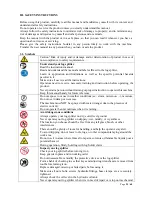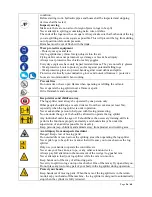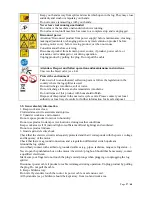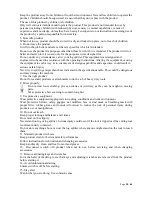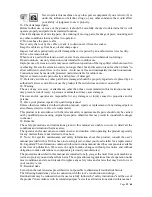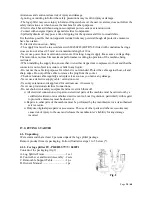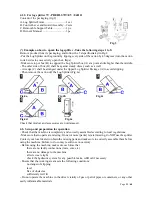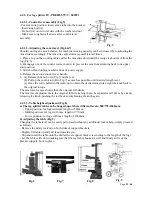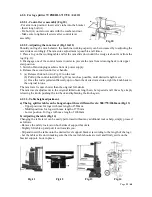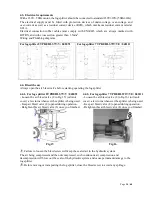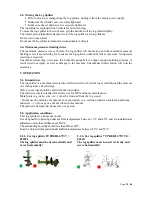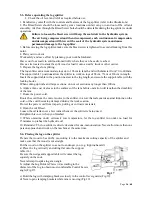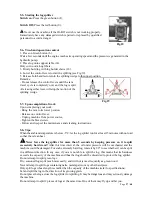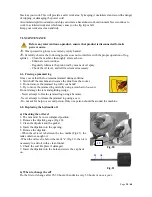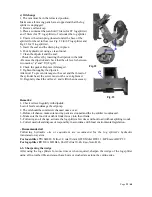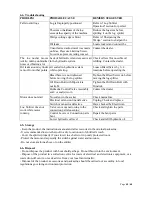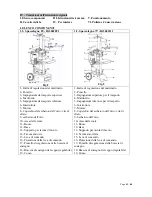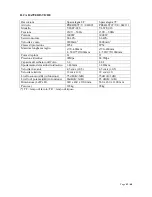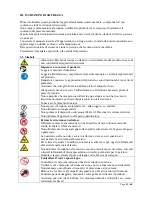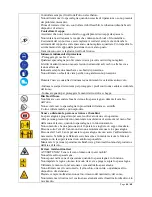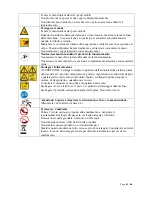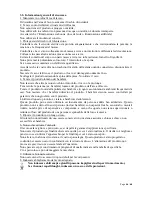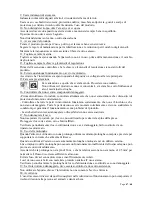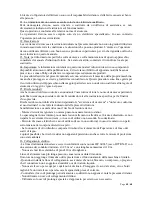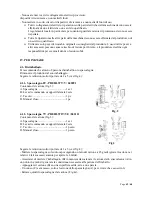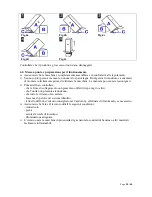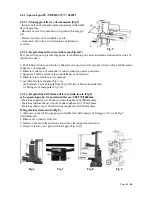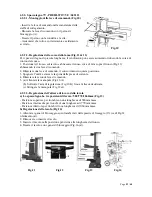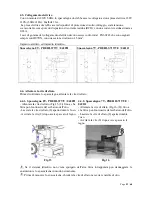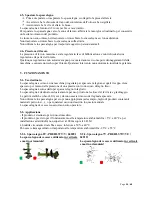
Page
39
/
60
c) Oil change
1. The ram must be in the retracted position.
Make sure all moving parts have stopped and that the log
splitter is unplugged.
2. Remove oil tank cap.
3. Place a container that can hold 7 liters (for 8T log splitter)
and 5 liters (for 7T log splitter) of oil under the log splitter.
4. Unscrew the drain plug (located under the base of the
splitter) for the oil to flow (see Fig. 22 for 8T log splitter and
Fig.23 for 7t log splitter).
5. Insert the seal and the drain plug in place.
6. Pour hydraulic oil using a clean funnel.
7. Clean the dipstick and the seal.
- Check the oil level by inserting the dipstick in the tank
- Remove the dipstick and check that the oil level is between
two marks (“a” and “b”)(Fig.21)
8. Check the gasket. Replace if damaged.
9. Tighten thoroughly the dipstick.
Attention! To prevent damage to the seal and the thread of
the cylinder head, the screw must not be over-tightened.
10. Regularly check the oil level ; and refill when necessary.
Fig.22
Fig.23
Remarks:
1- Check oil level regularly with dipstick.
Low oil levels can damage the oil pump.
2- The oil should be completely changed once a year.
3- Before oil change, make sure moving parts are stopped and the log splitter is unplugged.
4- Make sure that no dirt or debris finds its way into the oil tank
5- Following an oil change, activate the log splitter a few times without load (without splitting wood).
6- Collect used oil and dispose of responsibly in accordance with local environmental legislation..
- Recommended oil
Following hydraulic oils or equivalent are recommend for the log splitter's hydraulic
transmission system:
For log splitter 7T:
SHELL Tellus 22; Aral Vitam GF22; Mobil DTE 11 ; BP Energol HCP 22
For log splitter 8T
: DEA HD B46, Shell Tellus 10-46, Esso Nuto H 46
6.3- Sharpening the wedge
After using the log splitters for some time or when required, sharpen the wedge of the log splitter
using a fine-toothed file and smooth any burrs or crushed area along the cutting edge.

